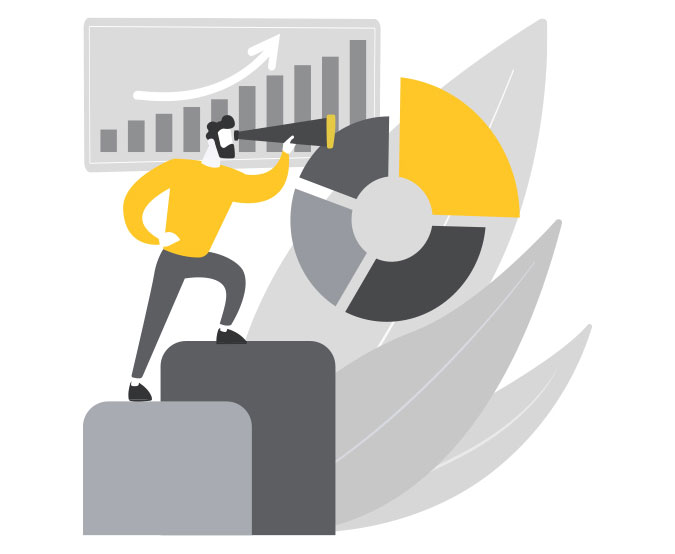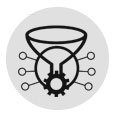It’s Time for Data-Driven Strategies: Well who in the organisation will decide that? CTO or CMO

Big Data is a buzzword you’re hearing everywhere. But it’s not just a buzzword or a trend, it’s a movement of understanding your customers, your unique buying cycle, and your content strategy.
To think of it, it may sound simple but is it that simple? Answer is Yes & No. Why both, because if you get it right then it’s simple but if you don’t then ‘Abhimanyu Chakravyuh Mein Fas Gaya Hai Tu’
Marketing data can often be overwhelming. Small businesses hear “big data” and think that’s not for me. Here comes the million dollar question: how much data is more data? Hence which concept fits the best ‘more the merrier’ or less is more’
Most marketing teams are leaving a lot of money on the table. According to Sitecore, the average US brand collects eight pieces of data per user, ranging from address to behavioral insights. Brands are collecting an extensive amount of data at various stages of the customer journey. Data science helps us leverage this data into actionable insight that results in a greater return on investment.
So what do we really need to understand?

The importance of collaboration in building a successful data team.
In short, successful data science and analytics are just as much about creativity as they are about crunching numbers, and creativity flourishes in a collaborative environment.
Traditionally, the way to measure the success of a brand’s online marketing has been to measure quantity — clicks, conversions, new visitors, etc. But that doesn’t tell us enough about a customer’s full experience with a brand. We want to understand the quality of the engagement and level of commitment to the brand, too, so we measure video completion rates, view-throughs, click-throughs, viewability, invalid traffic, and site visit lift. By combining quantity and quality, and understanding the relationship between them, we get a deeper understanding of a customers’ entire experience with a brand.
Another important aspect is to look at cost and how we can pass savings on to the advertiser – we want to reach a customer by engaging them with an ad at a lower price while getting the same value from their engagement.
And here is where Data Science comes in.

Data tells a story. When it comes to digital marketing, brands have the ability to collect an extensive amount of data at various stages of the customer journey. Data science helps us turn this data into actionable insight that results in a greater return on investment (ROI).
It’s an umbrella that encompasses Data Analytics. Data Science is a combination of multiple disciplines – Mathematics, Statistics, Computer Science, Information Science, Machine Learning, and Artificial Intelligence.
There is a lot of confusion about what a data scientist does and does not do. Specifically, people often interchange the terms of data science and data analytics. The easiest way to differentiate between the two is that a data scientist looks to predict the future, while a data analyst looks to summarize the past.
Also this is another term often used interchangeably, data science and machine learning. They are not quite the same thing. Data science tackles big data and includes data cleaning, preparation, and analysis. Machine learning, on the other hand, refers to a group of techniques used by data scientists that allow computers to learn from data.
So now that we understand the concept of Data Science, Understanding the workflow will only help to sort the million dollar question – how much data is more data?
A data science workflow is used to define the phases of your data science project. A well-defined workflow provides valuable guardrails to help the data science team successfully plan, organize, and implement each project.
Do note here I will be not getting into technicalities as there are specialists already in this space, the idea here is to understand that as a business head how do you really define each of these phases to be able to understand & improve your business process. It surely forces you to articulate your business and its processes, and to do so in ways that allow different people to collaborate. You simply can’t define your data and what it’s doing if you don’t know how your business is operating.
If you have to explain in layman’s language basically what Data science workflow really covers is:

Business Understanding:
Understanding your objectives and requirements from a business perspective

Data Understanding:
For example, to build a database of your customers, you need to understand the data your business currently has on customers and how you’re using it.

Data Preparation:
The data preparation phase covers all activities to construct the final dataset from the initial raw data.

Modeling:
Next, the model is taught patterns from the training set and tested. Machine learning techniques, such as feature selection, principal component analysis, and clustering algorithms are utilized at this stage.. For example, Amazon has more than 560 million items on the website and 300+ million users. it’s not humanly possible or even for a whole army of accountants would be able to track that many transactions without an AI tool.

Evaluation:
Regardless of your end goal, remember that you should continuously monitor and evaluate your workflow. This will make it easier to identify any regression and stability problems as soon as they surface.

Deployment:
Depending on your business requirement, this could mean getting your output in a dashboard or scaling it to a larger user base.
Talking about the Some Leading Brands Incorporate Data Science Into Their Marketing Mix are Netflix, Google, Facebook

As a subset of artificial intelligence, deep learning lies at the heart of various innovations: self-driving cars, natural language processing, image recognition and so on. Companies that deliver DL solutions (such as Amazon, Tesla, Salesforce) are at the forefront of Data Science.
Today Online e-commerce players like flipkart, bigbasket etc have been using data to boost marketing ROI already. Just to mention a few scenarios:
Scenario #1. Using a Demographic Data to Personalize Marketing Messages
Scenario #2. Using Customer Behavior Data to Send Behavior-Triggered Email Campaigns
Scenario #3. Combining Sales and Customer Behavior Data to Improve Advertising Campaigns
Scenario #4. Using Weather Data to Personalize Website Offers
Scenario #5. Using Advertising Data to Improve Other Marketing Channels
Scenario #6. Retargeting Website Visitors Based on Their Behavior
The above are just some of the many ways you could use data to inform, enrich and improve your marketing campaigns.
Data science is steadily shifting from an interesting, high-tech whim to a soon-to-be indispensable tool for all SaaS businesses. Its models are enabling us to get from various sources new actionable insights and better understand our target audience.
To My view:

At the end of the day, data science, machine learning, and AI technology have brought in revolutionary changes in digital marketing.
From today’s data science perspective all this seems like common sense. Data science has moved beyond predictive modeling into recommenders, text, image, and language processing, deep learning, AI, and other project types that may appear to be more non-linear. In fact, all of these projects start with business understanding. All these projects start with data that must be gathered, explored, and prepped in some way. All these projects apply a set of data science algorithms to the problem. And all these projects need to be evaluated for their ability to generalize in the real world.
The insights artificial intelligence gives you are seemingly endless. Marketers and data scientists alike know that at the end of the day, data is really about understanding people. In the age of social media, businesses have access to unfiltered, unbiased, real-time commentary from their customer base and people exposed to their brand. In the past, companies would spend a small fortune to hire a research firm to survey how people feel towards a product or campaign. In the 21st century, the data scientist is your research firm.
So it’s an organization’s mandate to invest in a Data team and not a department’s head (CTO or CMO) as Data is the fuel for business that is adopted by the data scientist for improving the performance of the overall business.
